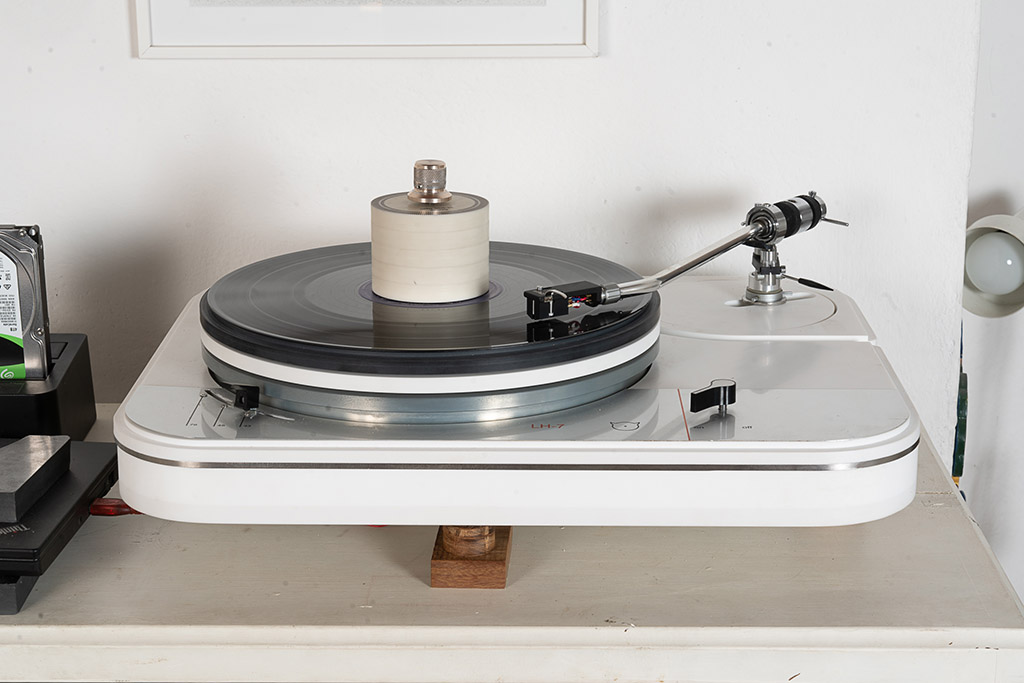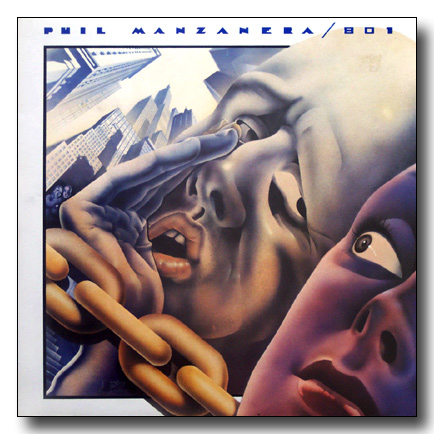... I apologize for my silliness on posts titles, folks... yet, I love experimenting on materials and aethetics solutions for my beloved turntable(s), bearings, platters, arms and plinths... it's passion in the passion and added pleasure... so being deadly serious isn't that necessary.
During 2012 I developed the bronze platter, a big improvement vs. the stock, original, strobo or strobo-less, extruded aluminium alloy platter.
After visiting Serge Schmidlin, on last September, I listened to his battery-operated turntable, using a plywood platter and the sound was, also considering the ancillary equipment and the whole turntable... well, I felt and heard a great sense of smoothness and "rightness" from discs I know VERY well...
My fiddling around the concept of a (generic) plywood platter was already in the making, but I choose to purchase a Delignit's Panzerholz 330 mm disc (a VERY expensive material, indeed) - as, after listening at Serge's I hadn't more doubts - and only few hours after being back home, I brought the disc to the machinist workshop... to became after careful lathing and bronze insert for added precision and bearing matching... a Panzer Kong platter: here is the finished look and finish, enamelled outside and natural underside, mirror polished on inner rim for smoothest idler-wheel running.
I've been asked if I hear differences among platters... well, YES, definitely!
Is Panzerholz better than bronze?
What's better?
It depends on tastes and what you're looking for, as for different timbres in musical instruments are salt-to-life - i.e. different nuances in violins and all stringed instruments are so well-known to be lapalissian...
Same different behaviour happens in our audio systems and we're all aware of this... someone prefere a cold sound, others a warm, forgiving, romantic, whatever sound... I'm more into natural and detailed.
Incredibly, a 13 kilos bronze platter sounds quite similar to a 3,5 kilos Panzerholz platter and both sound - you'd bet it - so different from original alu alloy platter, which seems to lack - after direct comparison - that slam, ooomph and guts, and the greatly improved decay...
Sounds stupid?
Vibes taming can be reached in several different and sometimes contrasting ways... lightness, honeycomb-like materials, super heavy mass, different materials taming each others, but also the dominant material vibration frequency is PARAMOUNT...
In audio literature, always highly hyped, you often finds "3 hz frequency isolation" or something... BUT, every material - like also every luthier is well aware of, has its own resonance and definite frequency; in audio, resonance is as important as isolation!
So, it's not only a matter of isolating - say - a turntable from subway or lorries, BUT, more and more, reaching a sort-of a "friendly frequencies matching" among different parts of a turntable.
The above is valid for almost any part of an audio system... or of a musical instrument: let's think about an acoustic guitar, the same AAA grade spruce soundboard sounds VERY different if the body, back and sides are made out of maple, mahoganny or Brazilian or Indian rosewood... tuning machines on a solid or slotted peghead also sounds different, a neck truss-rod made of graphite, aluminium rod T or square shaped sounds VERY different, to do NOT name body shapes and sizes.
Same is for a turntable... a plywood or a slate plinth sound VERY different, and it's not ONLY a matter of vibes taming, but of matching resonances and obtaining the most fluid and natural to the ear overall sound...
Same as it happens while cooking... blah, blah, blah...
Different theories are advocating heavy mass, period... I found - not alone, of course - that (let's call it) a pleasant, almost "musical" feeling while tapping, knocking a slab of this or that... works.
A lead sheet doesn't play nicely, yet, some lead can do.
A spruce platter... a lead platter... a rubber platter... maybe, who knows, never...
I remain open-minded and positive... in my limited experience, the Panzerholz platter for the 301/401 sounds really pleasant, deadly silent background of a different "colour" from bronze or stock platter... silence and pauses sounds more woolly (as warm, not dead), rich, beefier than stock platter.
Yesterday I went to New Year's Eve concert at "Teatro La Fenice" in Venice and the sound of the orchestra was reminding Panzerholz platter... yes, I'm a lunatic, I know...
The violins, violas, cellos and double-basses were very romantic and the flutes, piccolo, horns and percussions were extremely lively (...), also from the "pigeons nest" balcony seats I enjoyed.
The Delignit's plywood detailing is less exagerated vs. bronze very "severe", incredible retrieval capabilities... yet, acoustic instruments and classical string quartets, acoustic guitars and voices are amazing with Panzeholz.
Electric jazz and rock may sounds too "polite" and "sweet", yet dynamics are here, always surprising like it was surprising hearing the tympanis and large drum and triangle and gong, yesterday... Sir Gardiner conducting Verdi, Rossini and Tchaikovski.
So what?
A bronze platter is like a Martin '29 00-45 Brazilian Rosewood/Adirondack and a Panzerholz platter is like a '60s Gibson J-200... what's better?
Rich and mellow, the first vs. mellow and rich, the latter... both gorgeous.
I enjoyed the tasting a lot... and cherish both platters a lot.

















%20is%20a%20French%20daily%20evening%20newspaper.%20The%20cover%20shows%20Iraqi%20dictator%20Saddam%20Hussein%20at%20the%20time%20of%20the%20First%20Gulf%20War.jpg)








.jpg)


















.jpg)







































No comments:
Post a Comment